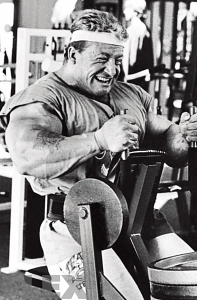Now I should preface this by saying for beginner and newer trainees, having strict rest periods is beneficial, as it teaches structure and focus in their training.
So How Do We Use Rest Periods?
We want performance to be high. When deciding on your rest periods, you should judge your performance readiness as an indicator for your next set. If you can undertake your next set with equal or greater intensity than your last set, then you’re ready.
Going by the clock when you’re not ready just to get a short term ‘metabolic’ advantage is not worth the performance loss that may accompany it. By the same token, if you’re ready after 60 seconds but your plan calls for 90 seconds rest, don’t wait for the extra 30 seconds to lapse, start your set.
Rest Period Guidelines
These aren’t set in stone, and there will of course be exceptions pertaining to different exercises. For example, if you’re doing 2 to 3 brutal sets of 20 on the leg press, the typical 45-90 second rest period that typically accompanies the 15-20 rep range doesn’t make sense if you expect to maintain performance.
Training Age And Intensity
If you watch a beginner perform a set of 10 on the squat, they’ll probably rack it and pick up the conversation they were having before with their training partner.
If you watch an advanced trainee perform a maximal set of 10, they’ll most likely be unable to walk or talk for a good few minutes.

Intensity Techniques
What About Women?


.png)

